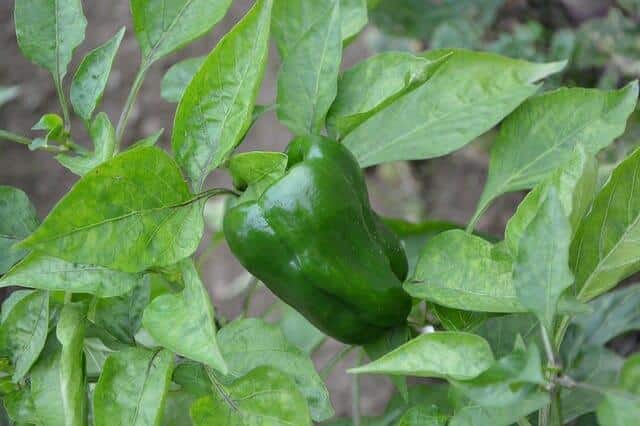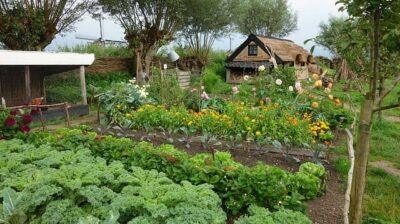|
Listen To The Article
|
Intuitively, we all know that diversity is important in ecosystems, and yet most gardeners chug along year after year using the same few plants in the garden, as if gardens themselves are not ecosystems and somehow fall outside of the laws of nature.
To be sure, many gardens do not resemble healthy ecosystems (think of a forest compared to a typical vegetable garden and you’ll get the point), which is why “weeds,” pests and disease are considered normal, and the consequent time spent dealing with these problems is seen as a necessary evil.
Indeed, many gardeners are now waking up to simple methods of ecological design that seek to deal with these time sinks by incorporating ecological principles inherent in healthy ecosystems into the design of their gardens. Forests, for example, usually deal with pests and diseases with ease, and are made up of what can be considered natural companion plants, or polycultures (more than one type of plant), also known as “plant guilds” that work together to support one another. Here’s how:
1. Making it harder for pests and disease to spread. With only a few types of plants in the garden, especially when they are all planted in one place, you are much more likely to attract pests that love those plants, while more
easily spreading disease. It’s simple population dynamics. For example, if all your squashes are planted tightly together, powdery mildew is more likely to spread from one plant to the other, unchecked. Space plants out in more natural patterns to make it harder for pests to find their favorite food and for diseases to jump easily from plant to plant.
2. Encouraging predators. More plant diversity means more types of habitat and food for beneficial insects, birds, frogs and other organisms that help keep insects and other pests in check. Trees and shrubs are also an important part of a healthy ecosystem, so incorporate them into your garden when possible, being careful to plan for their growth.
This New All-Natural Fertilizer Can Double Your Garden’s Yield!
As ecological designer Bill Mollison once said: “You don’t have a slug problem, you have a ground bird deficiency.” You could just as easily replace “slug” and “ground bird” with any other variety of pests and their predator. One example of a good predator to have around are various types of birds, which prefer shrubs and trees to perch on, and things like berries to eat.
3. Creating healthier ecosystem dynamics. This is related to the above point. More diversity leads to a healthier environment in many ways. For example, some plants provide specific ecosystem functions, such as nitrogen fixation (creating a macronutrient literally out of thin air), dynamic accumulation (bringing specific nutrients from the subsoil up into the topsoil where other plants can use them), ground cover (protecting soil from erosion and filling ecosystem niches so that unwanted opportunistic plants cannot take over), and as mentioned, providing habitat and food for beneficial organisms.
4. Limiting competition and filling spaces. In addition to more efficient nutrient cycles from dynamic accumulators, planting a diversity of plants will also lead to a diversity of plant root patterns and depths in general, and a diversity of nutrient needs that will cause less competition for nutrients and moisture. Further, it will help prevent erosion and nutrient leaching. Many gardeners keep annuals and perennials separate in the garden, but there is no reason to do this, and in fact, they work very well together, given that annuals tend to have more shallow roots, while perennials often have deeper roots. Meanwhile, annuals tend to flower for longer periods of time, and are perfect for filling the spaces between sapling trees while they grow larger, for example. Filling more space below and above ground also means that fewer unwanted plants will be able to make their way into your garden.
5. Using trap plants. A specific gardening technique you can use once you identify a pest in your garden is to find out what that pest’s favorite food is, and use it against them. Plant it in the middle of or near the affected plants, and the pest will often flock to it (e.g. use bok choi or pak choi to attract flea beetles away from brassicas/cruciferous vegetables). You can then spot spray them with organic pesticides like insecticidal soap or neem oil, or take a shop vacuum or dust buster to them if they are a slower moving pest.
Ecosystems are incredibly complex, but with knowledge of a few key principles, we can begin to work with natural systems (which is exactly what your garden is) to use their biological resources to do work for us. In other words, ecological gardening isn’t just for hippies and tree huggers; it’s for people who want to cut out unnecessary work and costs by hunkering down and learning about how the real world works. Diversifying your garden to include plant guilds or polycultures, is just one of the ways you can do this.
If you enjoyed this article, or want to share some of your own design ideas for polycultures or plant guilds, please share in the comments below!
 Off The Grid News Better Ideas For Off The Grid Living
Off The Grid News Better Ideas For Off The Grid Living





